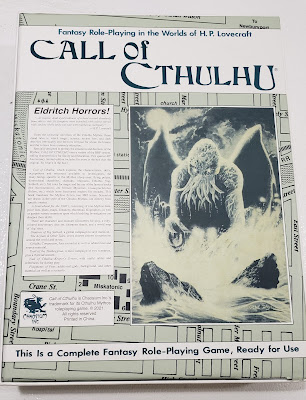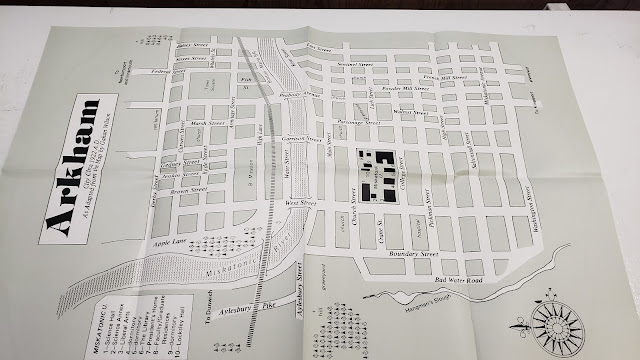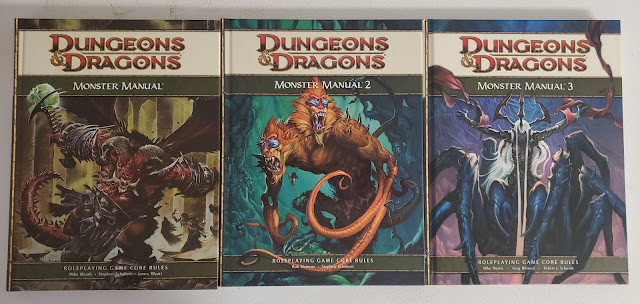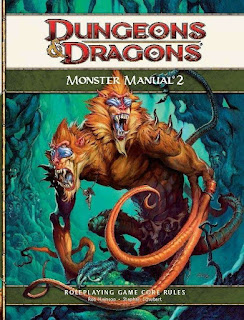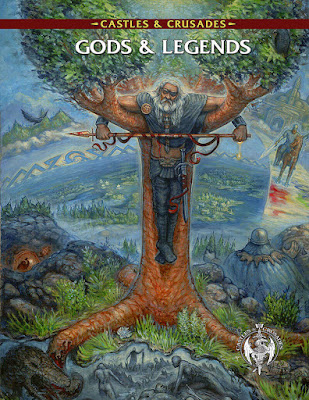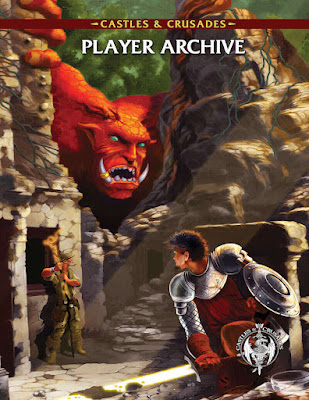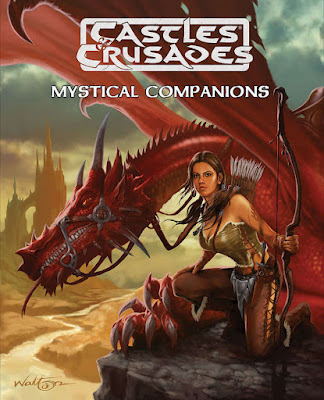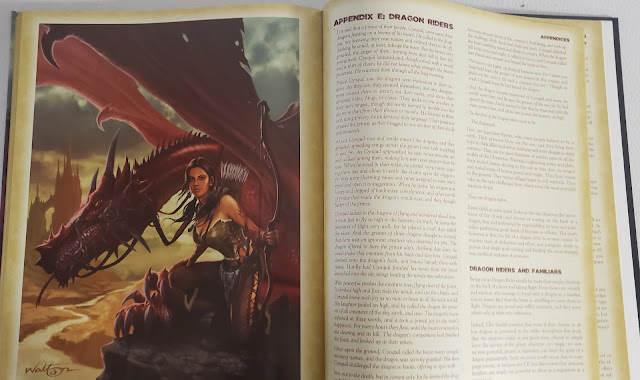Friday Faction: DIE Vol. 1: Fantasy Heartbreaker
 A ‘Fantasy Heartbreaker’ is a roleplaying game designed to emulate all that is good in another roleplaying game, but fixing all that is bad in said roleplaying game. Originally the term applied to the number of roleplaying games published in the wake of Dungeons & Dragons which all wanted to be better than Dungeons & Dragons. In DIE Vol. 1: Fantasy Heartbreaker takes the fantasy of Dungeons & Dragons and oh so many other fantasy roleplaying games and breaks both it and our hearts—and the hearts of his protagonists. DIE tells the story of six teenagers who back in the nineties played fantasy roleplaying games and when they were sixteen, on the night of one character’s sixteenth birthday they disappeared. When they returned, there were only five of them and one of them was missing her arm, and none of could talk about what happened. Twenty-five years later and they are adults, coping with adult life and still coping with the trauma of what happened to them in the past when they were missing. Then one of their number—the one on whose sixteenth birthday the roleplaying game session they were playing when they disappeared took place—receives a die on his birthday. A bloodied die. Together they know it can help them search for some answers, and perhaps heal some of their trauma. Yet it means going back to the game they were playing twenty-five years before, revisiting their youths, knowing the terrible truth is that it was never a game, it was real.
A ‘Fantasy Heartbreaker’ is a roleplaying game designed to emulate all that is good in another roleplaying game, but fixing all that is bad in said roleplaying game. Originally the term applied to the number of roleplaying games published in the wake of Dungeons & Dragons which all wanted to be better than Dungeons & Dragons. In DIE Vol. 1: Fantasy Heartbreaker takes the fantasy of Dungeons & Dragons and oh so many other fantasy roleplaying games and breaks both it and our hearts—and the hearts of his protagonists. DIE tells the story of six teenagers who back in the nineties played fantasy roleplaying games and when they were sixteen, on the night of one character’s sixteenth birthday they disappeared. When they returned, there were only five of them and one of them was missing her arm, and none of could talk about what happened. Twenty-five years later and they are adults, coping with adult life and still coping with the trauma of what happened to them in the past when they were missing. Then one of their number—the one on whose sixteenth birthday the roleplaying game session they were playing when they disappeared took place—receives a die on his birthday. A bloodied die. Together they know it can help them search for some answers, and perhaps heal some of their trauma. Yet it means going back to the game they were playing twenty-five years before, revisiting their youths, knowing the terrible truth is that it was never a game, it was real.DIE Vol. 1: Fantasy Heartbreaker is written by Kieron Gillon, best known for Wicked + The Devine, and published by Image Comics. It is inspired by asking the question, “What happened to the children who were lost in the fantasy world of the Dungeons & Dragons cartoon when they got home?” Whilst the cartoon never got to answer that question, Gillon does with DIE Vol. 1: Fantasy Heartbreaker, which takes the basis of stories such as the Chronicles of Narnia, that of children visiting a fantasy world, and updates them via the vehicle of roleplaying games to ask what happens if a world created by children through their consensual roleplaying was one where they were ready to suffer the consequences of their immature actions, even though their characters were adults? What if they had to go back to that world not only to face the traumas of their past experiences, but also the traumas their actions inflicted upon that world? And traumatised they are… Ash because he took his sister, Angela, to the game to keep her happy and did not have to. Angela, who as a Cyberpunk—in a fantasy setting!—gained her powers through faerie gold, and who must constantly find more to buy her powers, all but making her addicted to gold, and who returned to our reality without her cyberarm or her actual arm. Isabelle, able to summon and call upon the power of the gods like some kind of reverse demonologist, always with a price to pay. Matthew, already heartbroken over the loss of his mother, uses the tragedy to become a mighty Grief-Knight, but in reliving memories over and over again, is literally grief-stricken, to the point where it takes Ash as the Dictator to force him to use them. And even as they return to the fantasy world of their creation to try and heal the trauma of the past, they have something to lose—the lives they have led, and the relationships created in years since their return from their original visit. Which would exacerbate the ordeals they have already suffered…
DIE Vol. 1: Fantasy Heartbreaker is horror-fantasy rather than fantasy. It approaches the latter genre and roleplaying from a different angle, subverting both as well as pulling the rug out from under that sense of nostalgia that so many of us have for the roleplaying games and the time spent roleplaying in their youth. Just as the story forces the protagonists to revisit their past and the consequences of their actions, it is asking the reader to do that same, to think about back to their youth. Yet this does not wholly work unless the reader really is a roleplayer, since the language and the nostalgia of DIE Vol. 1: Fantasy Heartbreaker is very much that of roleplaying and even though the language and ideas behind roleplaying have become vastly more prevalent in the last decade, they are not necessarily familiar to every reader—and certainly not necessarily as familiar as Kieron Gillon is with them. This comes through in the dice assigned to protagonists and their roles in the world, explored in more detail in the essays reprinted at the end of DIE Vol. 1: Fantasy Heartbreaker, of the subtle shift in gender identity of the protagonist (something that roleplaying has always possessed scope for), and of subverting the tropes of the genre. The essays are fascinating reads, exploring in turn the author’s own history with roleplaying and how that influences the story of DIE Vol. 1: Fantasy Heartbreaker, how roleplaying design and theory influences the story, and lastly, the design of a roleplaying game based around the story. These are fascinating companion pieces to the story itself and once it is released to the forthcoming roleplaying game from Rowan, Rook, and Decard.
Of couse, DIE Vol. 1: Fantasy Heartbreaker is a comic book and Stephanie Hans’ artwork is simply gorgeous, switching from the dark tones of both the past and the now to the bright, sunlight lands of the fantasy and the often-fiery nature of combat. So much of the sense of loss and trauma and the emotion of the characters is conveyed through her artwork, whilst at the same time depicting the magic and the wonder of the world that the players and their characters in DIE Vol. 1: Fantasy Heartbreaker create. In addition, DIE Vol. 1: Fantasy Heartbreaker includes her alternate issue covers and many of the character designs. Without her artwork, the story is underwritten in places and the speed at which it is told does undermine the intended emotional impact.
DIE Vol. 1: Fantasy Heartbreaker is not a comic book that will be readily accessible to anyone not steeped in roleplaying or roleplaying lore. Yet there is a powerful sense of anguish and regret that any reader will grasp in its story, let alone the sense of nostalgia misplaced. Where they intersect with roleplaying and roleplaying culture is where the story comes alive and even were there not a forthcoming roleplaying book, DIE Vol. 1: Fantasy Heartbreaker is a story that will be enjoyed and appreciated by many in the roleplaying hobby.

